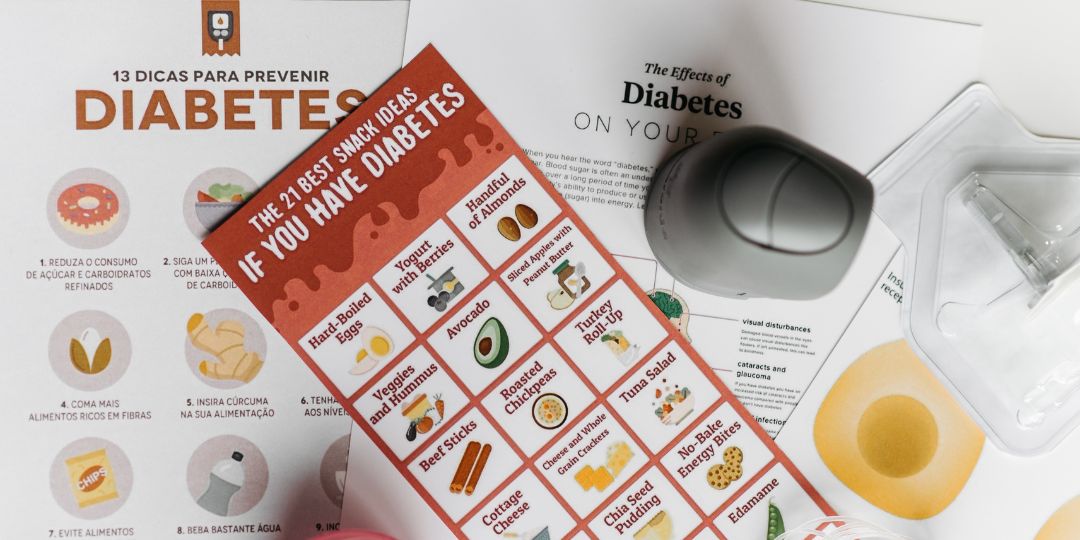Simply put, diabetes is a condition that occurs when your blood glucose, or blood sugar, is too high. But how does that happen, and what does it mean?
Table of contents
How your body creates and uses blood sugar
- When you eat, your body converts food into glucose, a type of sugar that your body uses for energy. Glucose is carried throughout your body by the blood.
- In order for your cells to access the glucose in your blood, insulin (a hormone created by the pancreas) has to "unlock" the cells to let the sugar in.
- If your body doesn't manufacture enough insulin, or doesn't use insulin properly, the glucose can't get into your cells. Instead, it remains in your blood. As more glucose remains in your blood, your blood sugar level rises.
Types of diabetes
About 23 million Americans have been diagnosed with diabetes—7% of the population.2 Among them are distinct sub-types:
- Type 1 diabetes: About 5% of people with diabetes have type 1 diabetes. In the past, this was known as "juvenile diabetes," because it typically affected children. In type 1 diabetes, the body does not produce insulin, so insulin must be "taken" through injections or an insulin pump.
- Type 2 diabetes: The most common form of diabetes, type 2 diabetes occurs when the body doesn't use insulin properly, or the pancreas doesn't create enough insulin to maintain healthy blood glucose levels. It can be treated through lifestyle changes, medication or insulin.
- LADA (latent autoimmune diabetes in adults): LADA shares characteristics of both type 1 and type 2 diabetes. People with LADA are often initially misdiagnosed with type 2 diabetes, but because LADA is an autoimmune disease, it requires specialized treatment. Research suggests that up to 10% of people diagnosed with type 2 may actually have LADA—making it even more prevalent than type 1.
- Gestational diabetes: Is estimated that about 9% of women develop this temporary form of diabetes late in pregnancy.
Causes and signs of diabetes
Type 1 diabetes is caused by the immune system destroying the insulin-producing cells in the pancreas. Type 2 diabetes has a variety of contributors—genes, lifestyle factors, obesity, and insulin resistance.7 But the signs of diabetes can be similar for each.
- Increased thirst and urination
- Increased hunger
- Fatigue
- Blurred vision
- Numbness or tingling in the feet or hands
- Sores that do not heal
- Unexplained weight loss
Talk to your healthcare professional if you think you have noticed signs of diabetes, so you can begin treatment right away.
- The National Institute of Diabetes and Digestive and Kidney Diseases. What is diabetes? Available at: https://www.niddk.nih.gov/health-information/diabetes/overview/what-is-d.... Accessed June 22, 2018.
- Centers for Disease Control and Prevention. National Diabetes Statistics Report, 2017. Available at: http://www.diabetes.org/assets/pdfs/basics/cdc-statistics-report-2017.pdf. Accessed June 22, 2018.
- American Diabetes Association. Type 1 diabetes. Available at: http://www.diabetes.org/diabetes-basics/type-1/. Accessed June 22, 2018.
- American Diabetes Association. Facts about type 2. Available at: http://www.diabetes.org/diabetes-basics/type-2/facts-about-type-2.html. Accessed June 22, 2018.
- Laugesen E, Østergaard JA and Leslie RDG. Latent autoimmune diabetes of the adult: current knowledge and uncertainty. Diabet Med. 2015;32(7): 843-852. Available at: https://www.ncbi.nlm.nih.gov/pmc/articles/PMC4676295/. Accessed June 22, 2018.
- American Diabetes Association. What is gestational diabetes. Available at: http://www.diabetes.org/diabetes-basics/gestational/what-is-gestational-.... Accessed June 22, 2018.
- The National Institute of Diabetes and Digestive and Kidney Diseases. Symptoms and causes of diabetes. Available at: https://www.niddk.nih.gov/health-information/diabetes/overview/symptoms-.... Accessed June 22, 2018.



